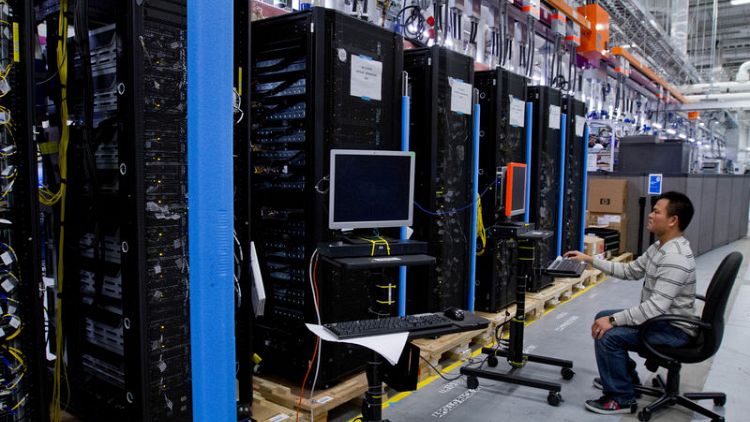By Lucia Mutikani
WASHINGTON (Reuters) - New orders for U.S.-made capital goods increased by the most in eight months in March, but a drop in shipments suggested business spending on equipment slowed down in the first quarter.
Other data on Thursday showed the number of Americans filing claims for unemployment benefits recorded its biggest increase in 19 months last week. The trend in jobless claims, however, remains consistent with a strong labour market.
The Commerce Department said orders for non-defence capital goods excluding aircraft, a closely watched proxy for business spending plans, surged 1.3 percent, powered by a jump in demand for computers and electronic products.
That was the largest increase in these so-called core capital goods since last July and followed a 0.1 percent gain February. Economists polled by Reuters had forecast core capital goods orders nudging up 0.1 percent in March. Core capital goods orders increased 2.8 percent on a year-on-year basis.
Shipments of core capital goods slipped 0.2 percent in March after gaining 0.2 percent in the prior month. Core capital goods shipments are used to calculate equipment spending in the government's gross domestic product measurement.
Business spending on equipment is expected to have slowed in the first quarter because of the delayed impact of sharp drops in oil prices toward the end of 2018 and fading depreciation provisions in the 2018 tax bill.
March's surge in core capital goods orders, however, suggests a pickup in business spending in the months ahead.
It also implies some stabilization in manufacturing activity, which has been squeezed by the ebbing stimulus from a $1.5 trillion tax cut package and supply chain disruptions caused by Washington's trade war with China.
U.S. Treasury prices fell on the data, while the dollar held gains. U.S. stock index futures were little changed.
BROAD ORDER INCREASES
In March, orders for machinery rose 0.3 percent after declining 0.7 percent in February. Orders for computers and electronic products soared 2.2 percent. There were also increases in orders for electrical equipment, appliances and components. But orders for primary metals fell, as did those for fabricated metal products.
Overall orders for durable goods, items ranging from toasters to aircraft that are meant to last three years or more, shot up 2.7 percent in March after declining 1.1 percent in the prior month. Orders for transportation equipment rebounded 7.0 percent after falling 2.9 percent in February.
Orders for motor vehicles and parts rose 2.1 percent in March. Orders for non-defence aircraft jumped 31.2 percent after plunging 25.4 percent in February.
Boeing reported on its website that it received 44 aircraft orders, up from only five in February. There were no orders booked for its troubled 737 MAX aircraft. Boeing's fastest-selling 737 MAX jet was grounded in March after two fatal plane crashes in five months.
In a separate report on Thursday, the Labour Department said initial claims for state unemployment benefits jumped 37,000 to a seasonally adjusted 230,000 for the week ended April 20. The increase was the largest since early September 2017.
Claims dropped to 193,000 in the week prior, which was the lowest level since September 1969.
Economists had forecast claims rising to only 200,000 in the latest week. Claims tend to be volatile around this time of the year because of the different timings of Easter and Passover holidays, as well as spring breaks for schools and universities.
Despite the volatility, labour market strength remains intact. The four-week moving average of initial claims, considered a better measure of labour market trends as it irons out week-to-week volatility, rose 4,500 to 206,000 last week.
Job gains averaged 180,000 in the first quarter, well above the roughly 100,000 jobs per month needed to keep up with growth in the working-age population. The unemployment rate is at 3.8 percent, close to the 3.7 percent Federal Reserve officials project it will be by the end of the year.
(Reporting By Lucia Mutikani; Editing by Andrea Ricci)



